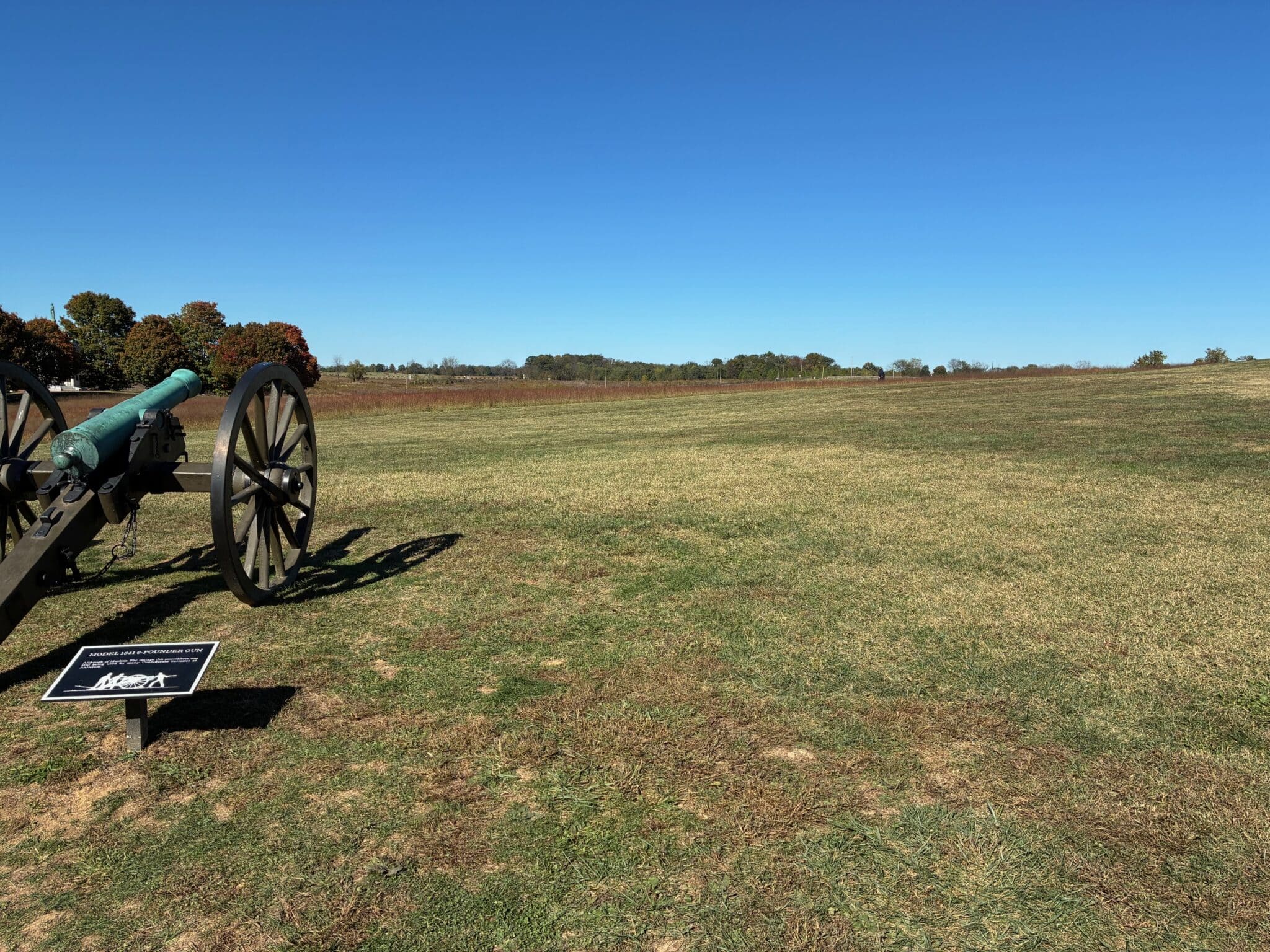Stephen D. Lee Battalion – Antietam
Quite possibly the most iconic, descriptive image of artillery in the entire American Civil War was snapped in the aftermath of the Battle of Antietam. Situated on the plain opposite Dunker Church, resided the guns of Stephen Dill Lee’s Confederate artillery. Sprawled around the pieces are the fallen gunners, a few of the over 23,000 soldiers that lost their lives on the bloodiest day—still—in American history.

When one mentions the surname “Lee” amongst Civil War enthusiasts, the mind automatically goes to Robert Edward Lee, the famous Confederate Army of Northern Virginia commander. And rightfully so. Digging deeper, maybe to Fitzhugh or William Fitzhugh “Rooney” Lee, cavalry commanders serving in the same army as their uncle or father, respectively, commanding for three years.
Stephen Dill Lee is not related to the Lees of Virginia but had a varied and impressive career as an officer for the Confederacy. Initially serving on the staff of General P.G.T. Beauregard at Charleston, South Carolina, he was one of the members that rowed out to Fort Sumter in Charleston Harbor to deliver the summons of surrender to Major Robert Anderson.
On May 11, 1861, Beauregard received authorization to organize two artillery companies and selected Lee, a 1850 graduate of West Point, to command one of them. In November 1861,he was promoted to the rank of major in the Confederate Army. He assumed command of a battery in Hampton’s Legion and went north to Virginia to serve with General Joseph Eggleston Johnston’s army. In March 1862, he received another promotion to lieutenant colonel and soon thereafter became the artillery chief for the division of Major General Lafayette McLaws until July 1862, when he was transferred to the same position under Major General John Bankhead Magruder. He served in the fighting along the Virginia Peninsula and Seven Days.
After a brief sojourn as the acting commander of the 4th Virginia Cavalry, Lee was back in charge of artillery, this time a battalion in the First Corps under Major General James Longstreet, through the Second Manassas Campaign and then into Maryland.
On September 5, Lee’s artillery reached the Potomac River but did not cross into Maryland until the 7th. Three days later, on September 10, Lee’s Battalion rumbled through Frederick and over the South Mountain range towards Hagerstown, Maryland, before moving toward Sharpsburg on the 15th. Lee’s artillerymen exchanged desultory fire late in the day, rising in crescendo and rate of fire near sundown.
On the 17th, Lee’s artillerymen manned positions on the plateau opposite Dunkard Church, supporting Confederate defenses of the West Woods and Cornfield. Late morning, Lee was reassigned to support the defenses along the Confederate right flank, opposite of where Federal General Ambrose Burnside would launch his assaults. Out of the 318 men serving under Lee, 85 became casualties, with 10 killed in action and 75 wounded. This was the highest casualty rate of any Confederate artillery battalion in the Battle of Antietam.

After the retreat to Virginia, Lee was promoted to brigadier general in November, and with this promotion, his tenure with the Army of Northern Virginia came to an end. He headed west, to Vicksburg and to an assortment of commands that would see the South Carolinian oversee in the years to follow all three branches of the Confederate army: artillery, cavalry, and infantry.
The battalion was given to Colonel E. Porter Alexander, and Lee left his successor with the hope that Alexander and his men “pray that you may never have to fight another Sharpsburg! Sharpsburg was just artillery hell!”
The picture, captured by Alexander Gardner, has immortalized that hell ever since.
Sources:
Col Stephen Dill Lee
Stephen D. Lee – Wikipedia
“Artillery at Antietam” – James A. Rosebrock

Why he was ever transferred out of artillery to infantry is beyond me. His “work” at Second Manassas was superb. Then we have the Atlanta Campaign…
Not quibble but 23,000 men did not “ lose their lives at Antietam.” That was total casualties. Killed was more like 3,600.
23,000 did not die at Antietam.
I just wonder how respected was his artillery work while he was deployed with the ANV? He seems to follow the pattern of those not meeting the standards of R E Lee and in this case, Longstreet, who replaced him with E P Alexander, gets shipped out West?
I just wonder how respected his artillery work was while he was assigned with the ANV? He seems to follow the pattern of those not meeting the standards of R E Lee and in this case, Longstreet, (who replaced him with E P Alexander) were shipped out West?